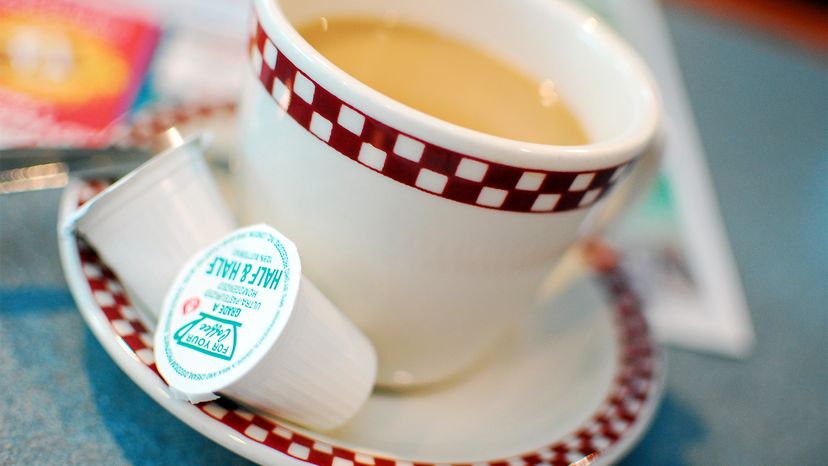
In an age where you can find a type of milk made every conceivable plant or animal out there, knowing what's going into your coffee is paramount. Let's start with the basics.
The milk you probably grew up on and still put in your cereal comes from those magical spotted herbivores known as — wait for it — cows. This lesson in bovine biology could end here, but there's recently been an air of confusion around a seemingly straightforward product produced by these wonderful ruminant ungulates. It concerns a product many of us (save for the lactose-intolerant bunch) use every day: half-and-half.
Advertisement
So, what the actual heck is half-and-half? Simple answer: Half-and-half is literally half whole milk mixed with half heavy cream. It was invented by a man named William A. Boutwell of Boutwell Dairy in Lake Worth Beach, Florida. The dairy regularly distributed the blend regionally between 1927 and 1956, before it eventually made its way into the refrigerators of Americans everywhere.
The U.S. Food & Drug Administration classifies half-and-half as the "food consisting of a mixture of milk and cream which contains not less than 10.5 percent but less than 18 percent milkfat," and says it must be "pasteurized or ultrapasteurized, and may be homogenized." These rules, of course, are different in countries like England where pasteurization isn't as important as during the preparation of milk and cheese.
In the U.S., Americans view half-and-half as an addition to coffee, but it can be used for ice cream, cream sauce, ganache and white Russians. With its thick consistency and rich, creamy flavor, half-and-half packs more of a punch than milk but is a bit more caloric at around 20 calories per tablespoon, whereas whole milk contains only 9 calories per tablespoon.
Heavy cream is even richer than both milk and half-and-half and contains at least 36 percent milkfat. One would usually use heavy cream for making caramel, custard, cheese and whipped cream.
And for those who would prefer to make your own half-and-half at home, it's simple. If a recipe calls for 1 cup half-and-half, you’ll need 1/2 cup whole milk and 1/2 cup cream. Simply mix the two and enjoy.
Advertisement


